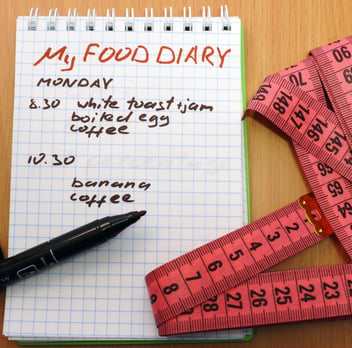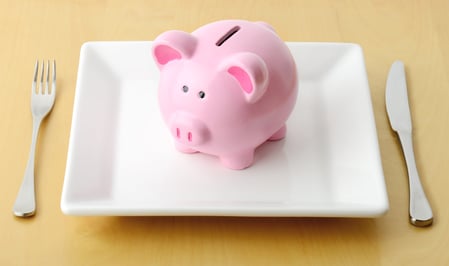 Lots of research has been done over the years to figuret out the best recipe for success when it comes to weight loss. Diet alone? Exercise alone? Or a combination of both? It should come as no surprise that the key for weight loss and keep it off is to combine a low-fat, lower-calorie diet with an exercise routine.
Lots of research has been done over the years to figuret out the best recipe for success when it comes to weight loss. Diet alone? Exercise alone? Or a combination of both? It should come as no surprise that the key for weight loss and keep it off is to combine a low-fat, lower-calorie diet with an exercise routine.
Results of a Weight-Loss Study
In a study funded by the National Cancer Institute in 2011, 439 overweight to obese postmenopausal women were assigned to four different groups: exercise only (45 minutes of moderate-vigorous activity five days per week), diet only (1,200–2,000 calories per day, depending on starting weight, and less than 30% of calories from fat), exercise and diet, and no intervention.
The yearlong study found that the exercise-only group lost 2.4% of their starting body weight, with the diet-only group losing 8.5% of their weight. However, the group that incorporated both a lower-fat and caloric diet and exercise lost 10.9% of their starting weight, which was an average loss of 19.8 pounds. One other thing that was significant in this study was that the women who lost the most amount of weight and body fat kept a daily food journal, writing down everything they ate and drank.
Tips for Losing Weight
As I said, it shouldn’t come as a surprise that a combination of more balanced eating and movement will lead to the most amount of weight loss. So here are some tips to help make this become a lifestyle for success.
- Keep a food log. As the study showed, the most successful individuals logged what they ate. Grab a pen and jot it down, or use an app or an online program for tracking. Whichever way works for you, start today!
- Focus on low fat. Aim for 30% or less of your intake from fat. Fat helps to make food taste more flavorful and helps to keep you fuller longer. However, aim for those good-for-you sources of fat such as nuts, avocado, olive oil, and salmon.
- Move more. The individuals in the study did 45 minutes of exercise, 5 times per week, but any movement is better than nothing. Start walking, cycling, strength training, stretching, and just moving more each day.
More Help from NIFS
If you want to lose weight and are considering starting to decrease your calories or start exercising, hopefully this will help you to decide to do both! If you need more assistance getting started, please contact me at amitchell@nifs.org to set up a personal nutrition coaching session to help meet your goals.


 options:
options:

 Best Weight-Loss Techniques
Best Weight-Loss Techniques
 Grocery shopping takes time, preparation, patience, and organization. But throw kids in the buggy (or cart) with you, and usually you end up with a big old, stressful mess. Take it from a mom with three kids under the age of 5; I know firsthand that it can be done happily and without tantrums (well, for the most part). But it’s taken some practice.
Grocery shopping takes time, preparation, patience, and organization. But throw kids in the buggy (or cart) with you, and usually you end up with a big old, stressful mess. Take it from a mom with three kids under the age of 5; I know firsthand that it can be done happily and without tantrums (well, for the most part). But it’s taken some practice. 
 The holidays are right around the corner, and the first thing that comes to mind is all that food! You don’t want to look like a Santa at the start of the New Year! Well, don’t feel guilty about consuming the goodies; just get smart! If you have an understanding of what it takes to properly fuel your body, specifically as you age, the healthy eating process doesn’t seem so daunting. Older adults have different needs, and there are some key nutrients that are really important to maintain.
The holidays are right around the corner, and the first thing that comes to mind is all that food! You don’t want to look like a Santa at the start of the New Year! Well, don’t feel guilty about consuming the goodies; just get smart! If you have an understanding of what it takes to properly fuel your body, specifically as you age, the healthy eating process doesn’t seem so daunting. Older adults have different needs, and there are some key nutrients that are really important to maintain.  As the Wellness Coordinator at NIFS, I get to meet a lot of great clients and help them attain their nutritional goals. I have noticed some common weight-loss questions that arise during the sessions. Hopefully if you have been wondering the same things, these answers will give you some more insight.
As the Wellness Coordinator at NIFS, I get to meet a lot of great clients and help them attain their nutritional goals. I have noticed some common weight-loss questions that arise during the sessions. Hopefully if you have been wondering the same things, these answers will give you some more insight. One of the biggest reasons people give as to why they aren’t eating healthy is the cost of foods,
One of the biggest reasons people give as to why they aren’t eating healthy is the cost of foods,  It has been found that
It has been found that  The biggest change, however, is the fact that you no longer have to think about what’s for dinner, or lunch, or even breakfast. What a joy! My husband and I have the same exact conversation every day at around 5:30pm: What’s for dinner? I don’t know. What do you want? I don’t care. What do we have lying around that I can toss together quickly? I don’t know, eggs, a salad? And we end up usually having a salad, maybe with an omelet. Easy, but sooo boring.
The biggest change, however, is the fact that you no longer have to think about what’s for dinner, or lunch, or even breakfast. What a joy! My husband and I have the same exact conversation every day at around 5:30pm: What’s for dinner? I don’t know. What do you want? I don’t care. What do we have lying around that I can toss together quickly? I don’t know, eggs, a salad? And we end up usually having a salad, maybe with an omelet. Easy, but sooo boring.